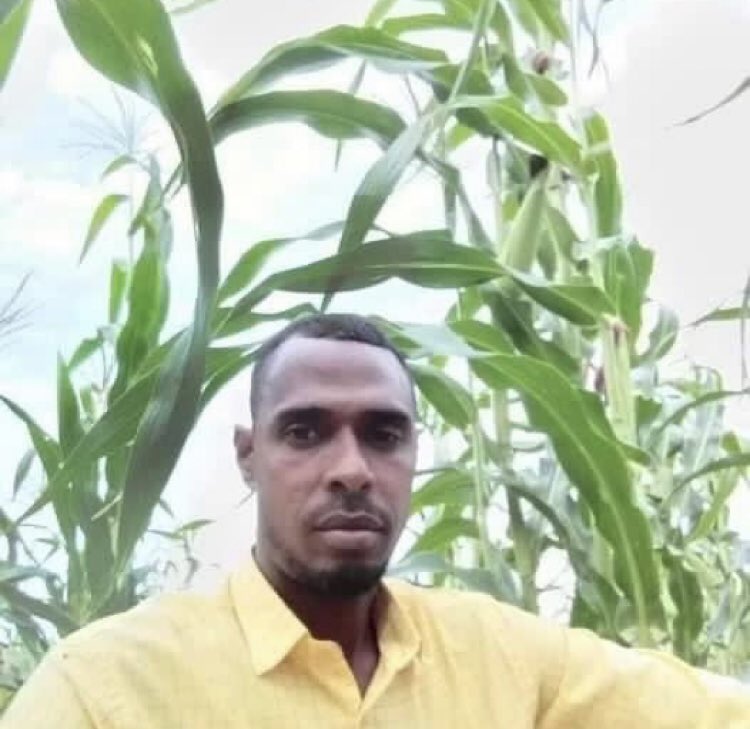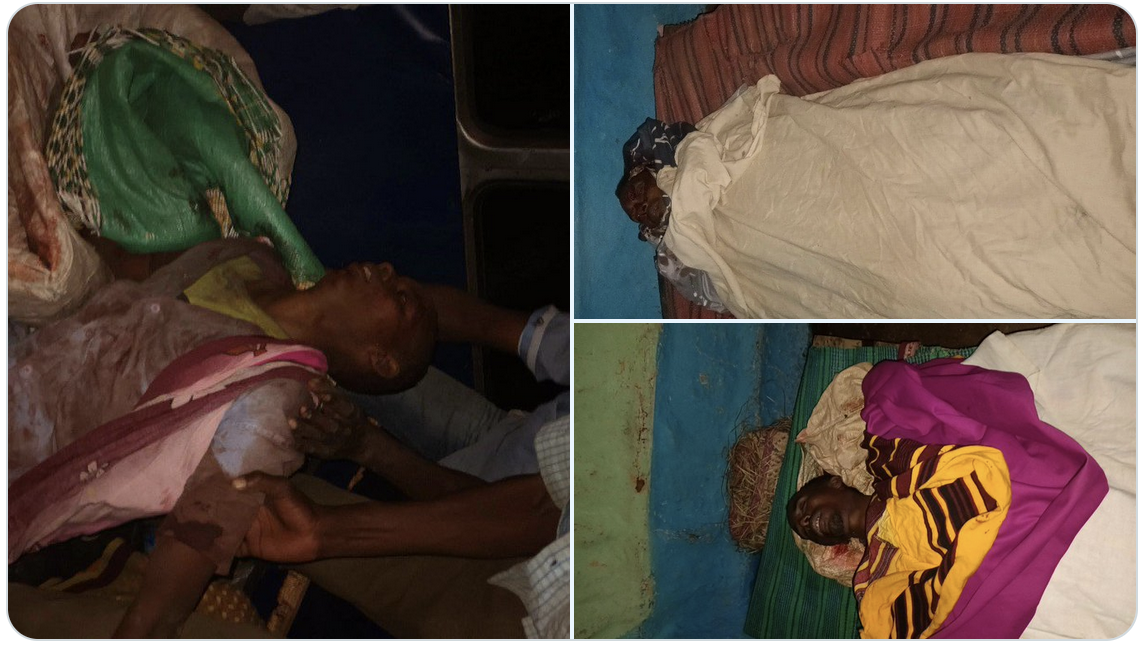Investigative Report | Deadly airstrike in Somalia reeks of strong US involvement

Somalian journalist Mohamed Gabobe, in his investigative report prepared for Mepa News, narrated the details of the incident in line with testimonies of victims and statements of the officials.
On 9th of September, 2022, a deadly drone strike in Somalia caused civilian casualties.
It was not known not who is behind the airstrike, but statements of witnesses and other details revealed different aspects of the incident.
Somalian journalist Mohamed Gabobe, in his investigative report prepared for Mepa News, narrated the details of the incident in line with testimonies of victims and statements of the officials. The names of the interviewed civilians in the report are changed for the security reasons.
As sunset neared in the Al-Shabaab controlled town of Mubarak a meeting was underway at a bus station with local hawkers and drivers to settle a dispute amongst the group, that's when I heard a loud bang, says Abdullahi Mohamed (not his real name)
Abdullahi, who drives a lorry transporting vegetables recalls witnessing numerous corpses and wounded people in his midst. He was among those wounded sustaining injuries from shrapnel as a result of the airstrike, he goes onto say.
The chairman, Haji Gafow and deputy chairman Hassan Abukar that were tasked with presiding over the meeting for the drivers and hawkers where instantly killed in the (drone) strike, Abdullahi reveals.

Hassan Abukar
The aftermath of the drone strike left 9 people dead and 8 others wounded, according to Abdullahi. He then briefly pauses and says 'they were all civilians'.
Abdullahi's account is consistent with testimony of other eyewitnesses of the drone strike targeting the town of Mubarak that took place on September 9th and was widely reported in local Somali media. A report published by the prominent Mogadishu-based radio station, Radio Dalsan just a day after the drone strike revealed that civilians were massacred in the drone attack as they put it.
Afterwards locals in the town rushed to their aid and began separating the dead from the wounded, including Abdullahi. He was than lifted onto a vehicle along with other victims suffering wounds from the airstrike. That's when the journey to Mogadishu began as they departed the Al-Shabaab controlled town of Mubarak situated 95 kilometers away from the capital city.
While on their way to Mogadishu, Abdullahi witnessed something out of ordinary that took his focus briefly off the pain he was feeling from the shrapnel. About four to five military style vehicles he recollects cut them off the road and forced them to pull over as they approached the Arbiska locality, situated outside Mogadishu.
As soon as he knew it, Abdullahi and the other wounded victims where all taken by force from the vehicles that they were in and whisked away by government security forces and eventually made their way to the government run Madina hospital in Mogadishu.
Upon arriving at the government run Madina hospital, Abdullahi said many of the wounded civilians brought in from Mubarak where profusely bleeding, some could barely even speak and where in a state of shock, while others where unconscious.
As soon as they entered the hospital, the security personnel at the government run Madina hospital began taking pictures of the victims when they were brought in, with some of the security personnel even heckling the wounded victims and calling them "Al-Shabaab", which Abdullahi felt was a form of humiliation.
Later on officers from the specially trained Criminal Investigation Department (CID) of the Somali police force began interrogating the wounded civilians as they lay stretched out on the bed. Questioning them on whether they had any ties to Al-Shabaab, taking photos of them, while others where even finger printed. Abdullahi says.
The claims made by Abdullahi where further corroborated by Abdirashid Hassan (not real name), whose younger brother Mahad Hassan (not real name) was wounded in the same drone strike targeting the town of Mubarak on September 9th.
While speaking on the phone from the Madina hospital, Abdirashid spoke in a soft and low pitch tone. At first, I assumed he wasn't able to speak-up due to the trauma of what had happened to his younger brother. However, Abdirashid went on to say that the hospital was crawling with officers from the Criminal Investigation Department (CID) and so he had to lower his voice, while speaking to me as he secluded himself in one of the empty rooms of the hospital.
Following the drone strike, his brother Mahad and the other wounded victims were transported by road in route to the capital, Mogadishu but before reaching Mogadishu, they were intercepted by security forces as they approached the Arbiska locality, he says. The wounded victims were seized and transferred to the government run Madina hospital in Mogadishu.
After arriving at the government run Madina hospital, security personnel began asking the victims all sorts of questions that pertained to their identities and any links to Al-Shabaab. They even had a list ready, Abdirashid says. The matters were made worse by the officers from the Criminal Investigation Department (CID) assigned to interrogate the wounded victims, he goes on to say.
Abdirashid couldn't understand why officers from the Criminal Investigation Department (CID) where sent in to interrogate his brother and the other wounded victims. These people are civilians - lorry drivers and hawkers that transported both people and goods from Mogadishu to various towns and districts in the nearby Lower Shabelle region, he tells me.
Mahad, his younger brother sustained serious wounds from shrapnel that struck an area under his heart and caused him to lose consciousness due to the drone strike and only realized he was in a hospital a day later after waking up and regaining consciousness. However, his memory has still not fully covered Abdirashid goes on to say.

Saldırıda hayatını kaybeden siviller
When the wounded drone victims were brought in from Mubarak, you'd expect for their health needs to be of upmost importance but yet they were interrogated and finger printed on more than one occasion by officers from the Criminal Investigation Department (CID). They even finger printed the victims that were falling in and out of consciousness, he says.
In the run up to the disturbing events at the government run Madina hospital, Abdirashid recollects a similar sequence of events in the town of Mubarak. The drone strike he said targeted a bus lot where a meeting was taking place between different drivers and hawkers that work the roads linking Mogadishu to the Lower Shabelle region.
In the past, they would hear engines roaring in the distance, signaling a drone was in the area or a strike was imminent, forcing everyone to flee or take cover. However, Abdirashid said this time around it differed. In Mubarak, residents have fallen victim to numerous drone strikes over the years but the velocity of this air raid was never seen before.
When asked about the casualties, Abdirashid says he knew the victims. They were all civilians, he says. When asked for further details, Abdirashid identified the deceased victims as Osman Sidow, Aden Gajeelo, Madey Hassan Goobe, Hassan Figlow, Haji Gafow, Abukar Hassan, Hassan Haji Ibrahim and his young son, an individual from the nearby village of Darasulam named Abukar Abdimasud and Abdullahi Sheikh Abukar known locally as 'Arab'
When asked for more details on Abdullahi Sheikh Abukar (Arab), Abdirashid argues that 'Arab' was a local civilian and went on to lambast the claims by the Somali government that accused 'Arab" of being a high-profile Al-Shabaab militant that was killed in operations targeting the town of Mubarak.
Furthermore, Abdirashid stated that despite the town of Mubarak being controlled by Al-Shabaab, the nearest Al-Shabaab base was two kilometers away, indicating that whoever carried out the drone strike got their intel wrong.
A senior Somali government security official that spoke on condition of anonymity due to the sensitivity of the matter confirmed that a meeting was underway in the Al-Shabaab controlled town of Mubarak on Friday September 9th between drivers that transport people, crops and other goods from the Lower Shabelle region to Mogadishu. The strike was intended to target a high-profile Al-Shabaab member, whom he alleges was at the venue and would only identify as 'Arab'
The official furthermore stated that there was credible intel that indicated a high number of civilian casualties arose from the operation that targeted 'Arab'. When asked which entity carried out the airstrike, the official declined to touch up on further details, with our conversation ending moments later.
Three days after the deadly drone strike that targeted the town of Mubarak, the president of Somalia, Hassan Sheikh Mohamud held a fiery press conference, with the prime minister and several regional leaders in attendance as he informed the public to leave areas frequented by Al-Shabaab as they risk falling collateral damage to airstrikes and raids, as he put it.
This press conference was widely circulated on state run television and came in the wake of the deadly airstrike targeting the Al-Shabaab controlled town of Mubarak, just days before.
Following the press conference, Somali president Hassan Sheikh jetted off to the United States where he met with senior US officials at the Pentagon to garner further US support in the war against Al-Shabaab.
Despite no official claim of responsibility for the drone strike by any entities, the deadly air raid targeting the town of Mubarak reeks of strong U.S. involvement.
AFRICOM has a long history of carrying out airstrikes targeting the town of Mubarak in Somalia’s volatile Lower Shabelle region, throughout the years. The town witnessed a deadly US airstrike in 2018 and a similar airstrike that was far more deadly in 2020, as reported by Airwars, a UK-based transparency watchdog that documents civilian casualties that arise from airstrikes in eight separate conflict plagued countries across the globe.
Source: Mepa News
